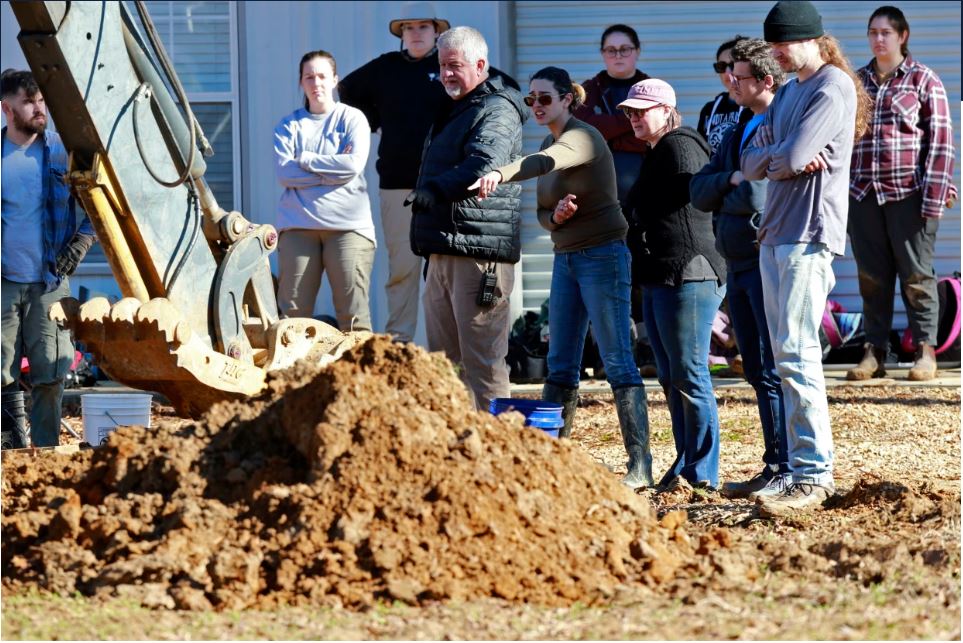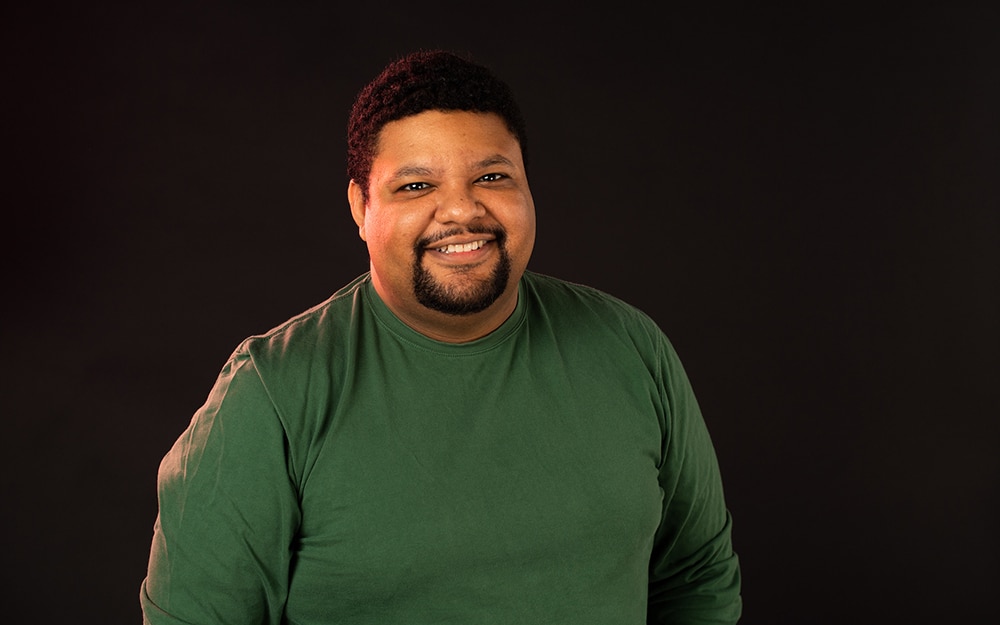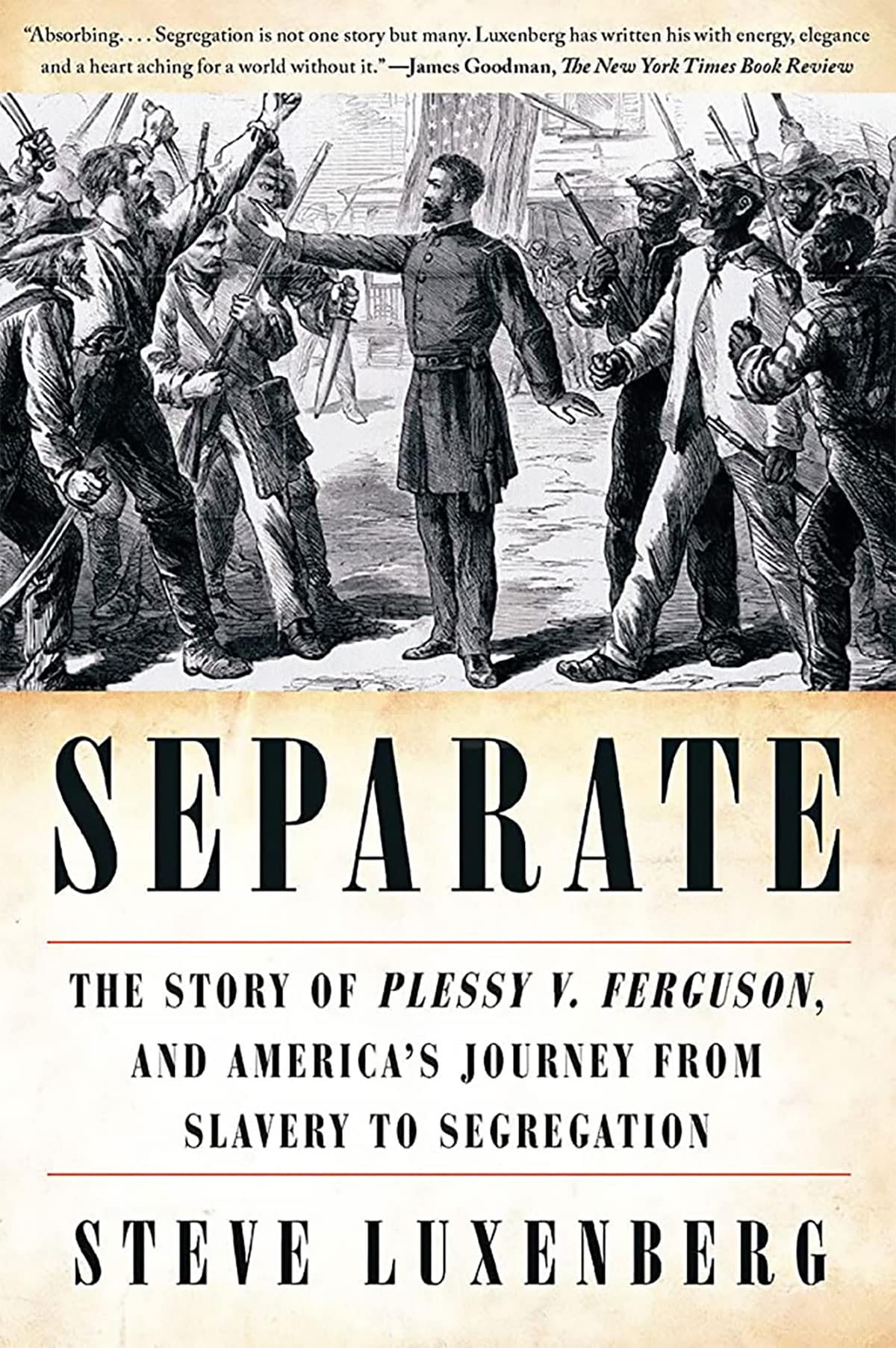Mississippi Today
MSU forensic anthropologist offers hope in identifying long missing persons

On June 1, 1960, Lyrian Barry-Stallings, a 5-foot-tall Black woman, boarded a Greyhound bus in Columbus to get to St. Louis, Missouri. She vanished, never to be seen at her destination or have further contact with her family.
Her missing persons case is among the profiles of hundreds of people in a searchable online database created by a Mississippi State University forensic anthropologist who hopes to help law enforcement find them and give their loved ones closure.
“(This is) to allow the public access to missing persons data so the state of Mississippi and anyone in Mississippi could find anyone who was missing in this state and information for families to advocate for them,” said Jesse Goliath, an assistant professor in the Department of Anthropology and Middle Eastern Cultures.
The Mississippi Repository for Missing and Unidentified Persons, launched in November, includes pictures, demographic information, where they were last seen and circumstances of their disappearance.
Since its launch, the database has profiles for 475 missing people and 51 profiles for unidentified remains.
Black and Indigenous people and people of two or more races are among the majority of missing people in Mississippi, which Goliath said mirrors national trends.
The database shows the average missing age was around 34.
Among the unidentified, the majority are white men and the average estimated age is around 28.
Cases in the database stretch back decades and the oldest unidentified case is of a Black woman between the ages of 30 and 40 whose skeletal remains were found in Natchez in May 1967.
People went missing or remains were uncovered mostly from population centers such as Jackson, the Coast, outside of Memphis and Hattiesburg, but there are cases from all over the state.

Before the database, Goliath said it wasn't clear how many missing and unidentified people there are in Mississippi.
There are national databases, like the National Missing and Unidentified Persons System, but because law enforcement isn't required to submit information to it, there is likely underreporting, he said. The National Crime Information Center collects information from law enforcement and compiles annual statistics about missing and unidentified people, but it has had challenges with receiving quality data that is often incomplete, too.
Goliath has spoken with members of law enforcement about how a database could be helpful to solve missing persons cases. He has found that there's not always enough staff dedicated to locating missing people, or there is a lack of communication between law enforcement agencies.
When someone goes missing, the local law enforcement agency will submit information to the Mississippi Bureau of Investigation to put out a missing persons alert on its emergency system that has the ability to be broadcast statewide, a spokesperson from the agency said.
This can also include posting the missing person's picture and information on social media, which would originate from the law enforcement agency where the person was filed missing.
The main way Goliath has found out about missing people is through Facebook when law enforcement post an alert and information about someone or posts from nonprofit advocacy groups such as MissingSippi and Mississippi Missing and Unidentified Persons.
“The more eyes, the more awareness these cases get,” he said about supporting the groups' work.
Undergraduate student workers scan social media to find information about missing and unidentified people to add to the database, Goliath said. Family members have also reached out to ask the team to include their loved one or to update their profile already included in the database, he said.
Goliath said the goal is to update the database every few weeks.
The database is modeled after one in Louisiana, which is based at Louisiana State University and is also run by forensic anthropologists.
Goliath said one of the goals of a Mississippi database is to build something lawmakers can support and create policy around, such as mandatory reporting to the database by law enforcement.
He and Assistant Professor Jordan Lynton Cox plan to use the database for research. He is interested in why people from certain demographics go missing compared to others.
With Cox, a cultural anthropologist, they want to map food deserts, hospitals and areas of poverty to find where people are missing from the most in Mississippi.
They also want to look at law enforcement budgets to see if the offices have the overall funding and resources and support to work in missing persons cases. Goliath wants to know if there are more people missing from areas with departments that are under budgeted.
He used his forensic skills for the Defense POW/MIA Accounting Agency, the goal of which is to identify all remains of soldiers missing since World War II and return them home to their families. Goliath said the agency is the biggest employer and trainer of forensic anthropologists.
At MSU, he is able to teach and research and occasionally the anthropology department is called to assist in missing persons cases, such as the exhumation in Pontotoc County of Felecia Cox – who had been missing since 2007 and was located after her killer, David Cox, told attorneys where to find her before his 2021 execution for killing his estranged wife Kim Kirk Cox, and sexually assaulting her young daughter as her mother lay dying. Felicia Cox was the wife of David Cox's brother.
Goliath said the The Bureau of Indian Affairs has contacted the department to go into a creek with cadaver dogs to look for a missing woman from the Neshoba area.
He also is called when bones are recovered and people want to know whether they belong to a human or an animal.
“We're all in this together in finding these people,” Goliath said about his forensic anthropology work.
For more information about the Mississippi Repository for Missing and Unidentified Persons, visit https://www.missinginms.msstate.edu/ or reach out by email at missinginms@msstate.edu.
This article first appeared on Mississippi Today and is republished here under a Creative Commons license.
Mississippi Today
On this day in 1896


MAY 18, 1896

The U.S. Supreme Court ruled 7-1 in Plessy v. Ferguson that racial segregation on railroads or similar public places was constitutional, forging the “separate but equal” doctrine that remained in place until 1954.
In his dissent that would foreshadow the ruling six decades later in Brown v. Board of Education, Justice John Marshall Harlan wrote that “separate but equal” rail cars were aimed at discriminating against Black Americans.
“In the view of the Constitution, in the eye of the law, there is in this country no superior, dominant, ruling class of citizens,” he wrote. “Our Constitution in color-blind and neither knows nor tolerates classes among citizens. In respect of civil rights, all citizens are equal before the law. The humblest is the peer of the most powerful. The law … takes no account of his surroundings or of his color when his civil rights as guaranteed by the supreme law of the land are involved.”
This article first appeared on Mississippi Today and is republished here under a Creative Commons license.
Did you miss our previous article…
https://www.biloxinewsevents.com/?p=359301
Mississippi Today
Renada Stovall, chemist and entrepreneur
Renada Stovall sat on the back deck of her rural Arkansas home one evening, contemplating life when she had a life-altering epiphany…
“I gotta get out of these woods.”
She heard it as clear as lips to her ear and as deep as the trees surrounding her property. Stovall's job as a chemist had taken her all over the country. In addition to Arkansas, there were stints in Atlanta, Dallas and Reno. But she was missing home, her parents and friends. She also knew, she needed something else to do.
“I thought, what kind of business can I start for myself,” said Stovall, as she watered herbs growing in a garden behind her south Jackson home. Some of those herbs are used in her all-natural products. “I know when I lived in Reno, Nevada, where it's very hot and very dry, there really weren't products available that worked for me, my hair, and my skin suffered. I've got a chemistry degree from Spelman College. I took the plunge and decided to create products for myself.”

In 2018, Stovall's venture led to the creation of shea butter moisturizers and natural soaps. But she didn't stop there, and in December 2022, she moved home to Mississippi and got to work, expanding her product line to include body balms and butters, and shampoos infused with avocado and palm, mango butter, coconut and olive oils.
Nadabutter, which incorporates Renada's name, came to fruition.

Stovall sells her balms and moisturizers at what she calls, “pop-up markets,” across the state during the summer. She's available via social media and also creates products depending on what of her ingredients a customer chooses. “My turmeric and honey is really popular,” Stovall added.
“The all-natural ingredients I use are great for conditioning the skin and hair. All of my products make you feel soft and luscious. The shea butter I use comes from West Africa. It's my way of networking and supporting other women. And it's my wish that other women can be inspired to be self-sufficient in starting their own businesses.”





This article first appeared on Mississippi Today and is republished here under a Creative Commons license.
Mississippi Today
On this day in 1954
MAY 17, 1954

In Brown v. Board of Education and Bolling v. Sharpe, the U.S. Supreme Court unanimously ruled that the “separate but equal” doctrine in Plessy v. Ferguson was unconstitutional under the 14th Amendment, which guaranteed equal treatment under the law.
The historic decision brought an end to federal tolerance of racial segregation, ruling in the case of student Linda Brown, who was denied admission to her local elementary school in Topeka, Kansas, because of the color of her skin.
In Mississippi, segregationist leaders called the day “Black Monday” and took up the charge of the just-created white Citizens' Council to preserve racial segregation at all costs.
This article first appeared on Mississippi Today and is republished here under a Creative Commons license.
-
SuperTalk FM6 days ago
Martin Lawrence making 3 stops in Mississippi on comedy tour
-
Our Mississippi Home5 days ago
Beat the Heat with Mississippi’s Best Waterparks
-
SuperTalk FM2 days ago
State auditor cracking down on Mississippians receiving unemployment benefits
-
Our Mississippi Home5 days ago
Charlie’s U-Pik: Opening Soon for the Summer Season
-
Mississippi News Video4 days ago
Jackson has a gang problem
-
Kaiser Health News5 days ago
Medicaid ‘Unwinding’ Decried as Biased Against Disabled People
-
228Sports4 days ago
George County Pours Runs In 6A South State Title Victory At PRC
-
Mississippi Today3 days ago
On this day in 1950









































